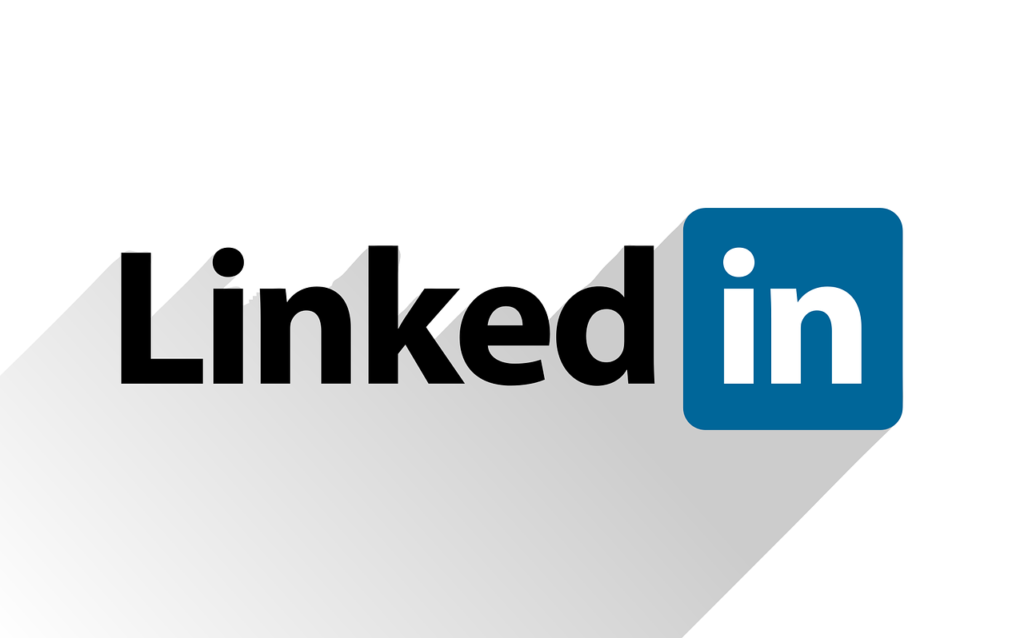This Article has been revised, edited and added to, by Poulomi Chakraborty.
LinkedIn has evolved beyond a platform for job seekers and recruiters; it’s now a powerful tool for professionals in various industries to network, share knowledge, and build their brand. In the life sciences sector, where connections, expertise, and visibility matter significantly, optimizing your LinkedIn profile for SEO (Search Engine Optimization) can make a substantial difference in your networking efforts.
In this detailed guide, we’ll explore how to leverage LinkedIn SEO for effective networking in the life sciences field. We’ll cover various aspects, from profile optimization to content strategy and networking techniques. Let’s dive in.
Section 1: Crafting a Search-Friendly LinkedIn Profile

The Importance of a Well-Optimized Profile
Creating a LinkedIn profile that is both search-friendly and appealing to connections in the life sciences sector is crucial for startup founders looking to establish a strong network. A strategically optimized profile not only enhances visibility but also positions you as a credible and authoritative figure in your industry.
Utilizing Keywords Effectively
To begin with, the incorporation of industry-relevant keywords is fundamental. Keywords should be selected based on their relevance to the life sciences sector, including specific terms related to biotechnology, pharmaceuticals, biomedical devices, clinical research, and other relevant areas of expertise. These keywords should be naturally integrated into various sections of your profile such as the headline, summary, and experience sections. The goal is to ensure that your profile appears in searches not only by potential business partners and investors but also by peers and industry leaders looking for collaborators.
Crafting a Compelling Headline
Your headline is often the first thing someone sees in search results, making its optimization crucial for capturing attention. Rather than just listing your current position, expand it to reflect your expertise and the value you bring to the life sciences community. For example, instead of simply stating “CEO at XYZ Biotech,” a more impactful headline could be “Biotech Innovator and CEO at XYZ Biotech | Specializing in Genomic Research and Personalized Medicine Solutions.”
Developing a Narrative in the Summary Section
The summary section of your LinkedIn profile is your opportunity to tell your story. Here, you should focus on your journey as a founder in the life sciences field, highlighting key achievements, ongoing projects, and future aspirations. This narrative should be infused with keywords, but it must remain fluent and engaging. Describe how your work addresses specific problems in the life sciences sector and how you push the boundaries of medical science and technology.
Showcasing Achievements and Endorsements
In the life sciences industry, credibility can be significantly enhanced by showcasing relevant achievements and endorsements. Include high-profile projects, published research, patents, or any awards you have received. Also, actively seek endorsements and recommendations from colleagues and industry figures to build authority. These endorsements can improve the perceived reliability of your profile and increase your visibility in search results.
Engaging with Relevant Content
Regularly engage with content related to your field. Share and comment on articles, join discussions, and post original content that reflects your insights into the life sciences. This activity not only helps keep your profile active but also increases your visibility within the network. Your contributions can position you as a thought leader, drawing more views to your profile.
Using Multimedia to Enhance Visibility
Incorporating multimedia elements such as videos, images, and presentations can help make your profile more engaging. For instance, sharing a video tour of your laboratory, images of your research activities, or slides from a presentation at a conference can provide a richer, more immersive experience for viewers and highlight your contributions to the field.
Optimizing your LinkedIn profile requires a balance of strategic keyword placement, engaging content creation, and active industry engagement. By focusing on these elements, you can enhance your profile’s visibility and establish yourself as a leading figure in the life sciences community. This strategic approach not only attracts the right connections but also opens up opportunities for collaboration and innovation in an ever-evolving industry.
Section 2: Content Strategy for Enhanced Visibility

Understanding the Role of Content in Networking
For startup founders in the life sciences sector, LinkedIn serves not only as a platform for networking but also as a crucial medium for brand and professional identity development. A thoughtfully crafted content strategy enhances visibility, engaging potential partners, clients, and investors by showcasing expertise and innovation.
Developing a Thematic Approach
Creating a cohesive content strategy involves developing themes that resonate with your target audience. These themes should align with the pressing issues and trends within the life sciences industry, such as advancements in biotechnology, regulatory changes, funding opportunities, and breakthrough research findings. By consistently aligning your content with these themes, you establish your profile as a go-to resource for current and relevant information in your field.
Curating and Creating High-Quality Content
The effectiveness of your content strategy hinges on the quality of the content you share. High-quality, original articles, insightful analyses, and case studies that discuss real-world applications of life sciences technologies showcase your depth of knowledge and commitment to the industry. Curating content from reputable sources also plays a crucial role. By selecting and sharing impactful articles, studies, and news pieces, you contribute to important conversations, enhancing your profile’s visibility and engagement.
Engaging with Interactive Content
Interactive content such as polls, questionnaires, or interactive infographics can significantly increase engagement on your LinkedIn profile. This type of content not only fosters interaction but also provides valuable insights into your followers’ interests and needs, allowing you to tailor your future content more effectively. Additionally, these engagements often lead to higher visibility in your network’s feeds, amplifying your reach.
Timing and Consistency
The timing of your posts is critical. Analyzing when your audience is most active on LinkedIn allows you to schedule posts for maximum visibility and engagement. Consistency in posting is equally important; regular updates keep your network engaged and ensure a steady presence within the LinkedIn community. Consider using scheduling tools to maintain a consistent flow of content, even during busy periods.
Leveraging Multimedia and Visuals
Utilizing multimedia elements can transform static posts into engaging experiences. Videos explaining complex scientific concepts, graphics illustrating data, and photos from industry events or behind-the-scenes at your startup make your content more engaging and shareable. These visual elements help simplify complex information and provide a break from text-heavy content, making it more likely to capture interest and be shared within and beyond your network.
Incorporating User Feedback
Actively seek feedback on your content and use it to refine your strategy. This feedback can come through direct comments on your posts or through private messages. Engage with your audience by responding to comments and discussing their points of view. This not only boosts engagement rates but also builds a community around your profile, increasing your credibility and approachability.
A robust content strategy on LinkedIn for a life sciences startup founder should prioritize quality, relevance, and engagement. By developing a thematic approach, ensuring consistent, timely posts, and engaging with your audience, you can significantly enhance your visibility on the platform. This strategic approach not only positions you as a thought leader but also amplifies your network’s growth and opens up new avenues for professional opportunities.
Leveraging Hashtags and Keywords

Strategic Integration of Keywords
The integration of keywords into your LinkedIn profile and content strategy plays a pivotal role in enhancing your visibility to the right audience. As a founder in the life sciences sector, it’s essential to identify and incorporate keywords that are not only popular but also highly relevant to your specific niche. These keywords should relate to your area of expertise, the technologies you are developing, and the industry applications you target. By strategically placing these keywords in your profile, articles, updates, and even in your comments on others’ posts, you optimize your visibility in search results, making it easier for like-minded professionals, collaborators, and potential investors to find your profile.
Harnessing the Power of Hashtags
Hashtags function as a method of categorizing content, enabling it to be discovered by LinkedIn users beyond your immediate connections. For effective use of hashtags, it is advisable to conduct research to discover which hashtags are most commonly followed by life sciences professionals on LinkedIn. Using such hashtags can greatly increase the reach of your posts to those who may be interested in your field but are not yet in your network. Furthermore, consider creating and promoting a unique hashtag for your startup. This can help in building brand identity and can be used to aggregate content related to your company’s activities, milestones, and events.
Balancing Broad and Niche Tags
When utilizing hashtags, there is a strategic balance to be struck between broad appeal and niche targeting. Broad hashtags, like #biotech or #pharmaceuticals, will expose your content to a larger audience, but may also place you in a very competitive pool, reducing the chances of your content standing out. Conversely, more specific hashtags such as #genomicinnovation or #CRISPRtech might not reach as large an audience but will attract a more targeted, potentially more engaged group of professionals. Including a mix of both types of hashtags in your posts can optimize your reach and engagement levels.
Consistent Use of Hashtags and Keywords
Consistency in the use of keywords and hashtags is key to building a recognizable online presence. Regularly using the same set of well-chosen keywords and hashtags in your posts can reinforce your brand’s association with specific topics or areas of expertise in the life sciences. This consistent usage helps in conditioning your audience to associate your profile with authority and reliability in those areas, enhancing the likelihood of your content being shared and recommended.
Measuring and Adjusting Strategy
To truly capitalize on keywords and hashtags, you must regularly measure and refine your strategy based on performance analytics. LinkedIn provides insights that can help you understand which keywords and hashtags are driving views and engagements on your posts. Use this data to adjust your content strategy, focusing more on what works best, and consider phasing out those that do not perform as well.
Incorporating a well-thought-out strategy for keywords and hashtags into your LinkedIn activities is not merely about improving searchability but also about enhancing the overall relevance and reach of your content. For startup founders in the life sciences, a dynamic and data-driven approach to using keywords and hashtags can significantly amplify your profile’s effectiveness, helping you connect with the right people and open up new avenues for collaboration and growth.

Related: Check out our free SEO suite

Section 3: Networking Techniques for Lifesciences Professionals
Cultivating Strategic Connections
Networking on LinkedIn for lifesciences professionals involves more than accumulating a vast number of connections. It requires a strategic approach to cultivate relationships that are meaningful and beneficial for your startup’s growth and development. As a founder, you should focus on connecting with individuals who can offer expertise, partnership opportunities, or potential investment. This includes peers, industry leaders, researchers, potential clients, and investors who are actively involved in the life sciences sector.
Engaging in Meaningful Interactions
Once connections are made, the key to maintaining a strong network lies in engaging in meaningful interactions. Regularly interacting with your connections’ posts, sharing their content with thoughtful comments, and offering genuine insights can help solidify relationships. This engagement demonstrates your interest and dedication to the field, making others more likely to reciprocate by engaging with your content and providing support in your endeavors.
Leveraging LinkedIn Groups

Joining and actively participating in LinkedIn groups related to the life sciences can be a powerful networking technique. These groups are gathering places for like-minded professionals who share specific interests in various aspects of the life sciences. By contributing to discussions, sharing your content, and connecting with other group members, you can enhance your visibility and establish yourself as an active member of the life sciences community. This involvement can lead to direct interactions with key figures who can provide insights, guidance, or collaboration opportunities.
Hosting and Participating in Events
With the rise of digital platforms, virtual seminars, webinars, and conferences have become commonplace. Hosting or participating in such events can significantly increase your visibility and position you as a thought leader in the life sciences field. These events offer the opportunity to showcase your expertise, discuss your research or products, and connect with attendees who have direct or tangential interests in your field. Additionally, promoting these events through LinkedIn and inviting your connections can enhance your profile’s activity and engagement.
Utilizing Advanced Search Features
LinkedIn’s advanced search feature is a powerful tool for finding and connecting with specific professionals in the life sciences industry. You can use filters such as location, current company, past company, industry, and other keywords to find potential connections that match your strategic networking goals. Once these targeted individuals are identified, personalized connection requests that mention mutual interests or potential areas of collaboration can lead to higher acceptance rates and more fruitful relationships.
Offering Value Through Recommendations
Writing recommendations for your connections can be a mutually beneficial tactic. Not only does this help in strengthening your relationships, but it also encourages others to reciprocate by endorsing your skills or writing recommendations in return. These endorsements enhance your credibility and authority within the industry, making your profile more attractive to new connections.
Effective networking on LinkedIn for lifesciences professionals requires a combination of strategic connection building, active engagement, participation in community groups, involvement in industry events, and the use of advanced search functionalities to target key individuals. By employing these techniques, startup founders can establish a strong network that supports both personal and professional growth in the dynamic field of life sciences.
Section 4: Measuring and Improving Your LinkedIn Networking
Assessing Networking Success
For startup founders in the life sciences sector, it’s crucial to understand that networking on LinkedIn is not just about increasing the number of connections, but about building valuable relationships that contribute to business growth and personal development. Assessing the success of your LinkedIn networking activities involves analyzing both quantitative and qualitative data. The quantitative data includes metrics like the number of new connections, profile views, and interactions (likes, shares, comments). However, qualitative measures, such as the relevance and strength of these connections and the opportunities they bring, are equally important.
Analyzing Engagement Metrics
To improve your LinkedIn networking effectiveness, begin by regularly reviewing your LinkedIn analytics. This dashboard provides insights into how your content is performing, who is viewing your profile, and which posts generate the most engagement. High engagement rates typically indicate content relevance and can guide you in fine-tuning your posting strategy to better meet the interests of your audience. Moreover, tracking changes in the rate of profile views following networking events or content postings can help measure the direct impact of specific activities on your visibility.
Leveraging LinkedIn’s Social Selling Index

LinkedIn’s Social Selling Index (SSI) can be a valuable tool for startup founders. This index measures how effectively you are achieving your professional brand, finding the right people, engaging with insights, and building relationships. By evaluating your performance in these areas, the SSI provides a clear framework for improvement. Regularly checking your SSI can help you identify areas where your engagement strategies might be lacking and where you can optimize your networking practices for better results.
Conducting Network Audits
Regularly auditing your LinkedIn network can provide insights into the quality of your connections. Reviewing who your connections are, how they interact with your content, and what mutual benefits exist can help you determine which relationships need more attention or which might not be as beneficial as expected. This audit can also highlight gaps in your network, such as missing key influencers or potential partners, prompting targeted networking efforts to bridge these gaps.
Fostering Meaningful Conversations
Engaging your connections through meaningful conversations is essential for deepening relationships and uncovering opportunities. Start by reaching out to new connections with a personalized message, and continue engaging with existing connections by sharing relevant content, asking insightful questions, or offering assistance. These interactions can strengthen relationships and increase the likelihood of your connections becoming advocates for your brand within their own networks.
Experimenting with Content Formats
Different content formats can resonate differently with your audience. Experimenting with a mix of articles, videos, infographics, and interactive posts can help you discover what best engages your network. For instance, sharing video content of a recent keynote speech or an infographic summarizing recent research findings may yield different engagement levels, and tracking these can tell you more about your audience’s preferences.
Improving your LinkedIn networking as a lifesciences startup founder involves a continuous process of measurement and adjustment. By assessing both the quantitative and qualitative aspects of your network, leveraging tools like the SSI, conducting regular network audits, fostering meaningful interactions, and experimenting with various content types, you can enhance your networking strategy. This refined approach not only improves your visibility and influence on LinkedIn but also drives meaningful engagement that can translate into tangible business opportunities.
Conclusion
In the rapidly evolving field of life sciences, LinkedIn stands out as a powerful platform for professionals seeking to broaden their network and elevate their industry presence. For startup founders, mastering LinkedIn SEO and networking strategies is not merely about enhancing online visibility; it’s about forging meaningful connections that can drive both personal and business growth. The key lies in crafting a search-friendly profile, developing a targeted content strategy, utilizing hashtags and keywords effectively, and continually refining networking techniques.
By implementing these strategies, founders can position themselves as thought leaders and tap into a wealth of collaborative and investment opportunities within the life sciences community. Regularly measuring the impact of these strategies through LinkedIn’s analytics tools and adjusting based on engagement and network growth ensures that your networking efforts are not just consistent, but also fruitful. As the life sciences landscape continues to expand, the ability to adapt and optimize your LinkedIn presence will remain a crucial element in achieving long-term success and influence in the industry.
Read Next
- Startup SEO ROI Tracking: Metrics to Measure Business Growth
- Balancing SEO and Paid Advertising Budgets for Startup Success
- Startup SEO Budgeting for E-commerce: Conversion Rate Optimization
- Startup SEO Budgeting for E-commerce: Conversion Rate Optimization
- Content Marketing and SEO Budget Synergy for Startup ROI






















Comments are closed.